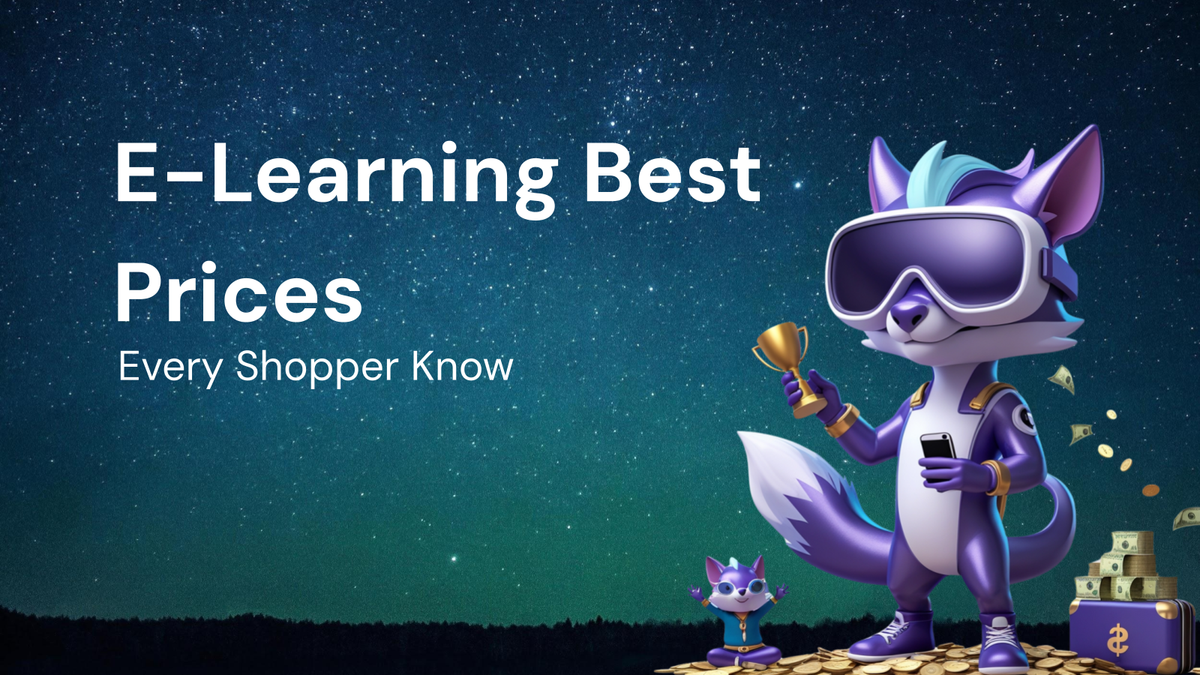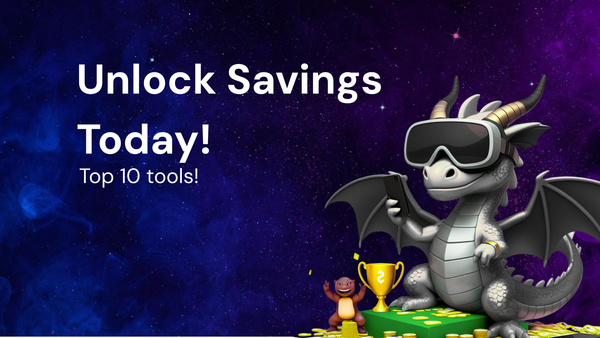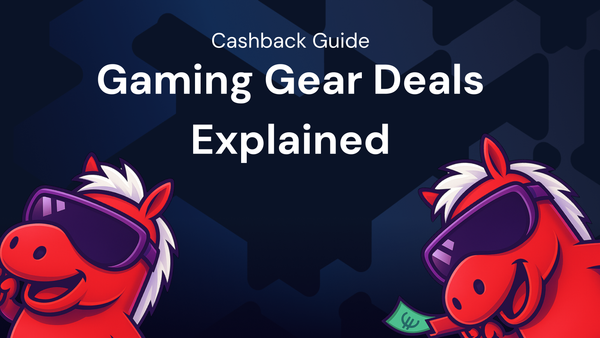Comparison Every Shopper Should Know for e-learning platforms best prices

Comparison Every Shopper Should Know for e-learning Platforms: Best Prices
In today's fast-paced world, lifelong learning is no longer a luxury but a necessity. Whether you're looking to upskill, reskill, or simply explore a new passion, e-learning platforms offer a flexible and accessible avenue for personal and professional growth. However, with a plethora of options available, navigating the landscape and finding the platform that best fits your needs and budget can be overwhelming. This article aims to provide a comprehensive comparison, focusing on price structures and value propositions, to empower you to make an informed decision. We're not here to sell you anything; instead, we'll equip you with the knowledge to confidently explore the e-learning universe and find the best fit for your educational aspirations.
I. Understanding the E-learning Landscape: A Quick Overview
Before diving into the specifics of pricing, it's essential to understand the diverse range of e-learning platforms available. These platforms can be broadly categorized based on their content, target audience, and pricing models.
- University-Based Platforms: These platforms are often affiliated with established universities and offer online courses, degrees, and certificates. They typically boast rigorous curricula, experienced instructors, and academic credibility. Examples include edX, Coursera, and FutureLearn.
- Skill-Based Platforms: These platforms focus on practical skills and professional development, often catering to specific industries or career paths. They offer courses on topics such as coding, design, marketing, and business. Examples include Udemy, Skillshare, LinkedIn Learning, and Codecademy.
- Specialized Platforms: These platforms cater to niche interests and hobbies, offering courses on topics ranging from music and art to cooking and gardening. Examples include MasterClass, CreativeLive, and Domestika.
- Open Educational Resources (OER) Platforms: These platforms provide free access to educational materials, including courses, textbooks, and learning resources. Examples include Khan Academy, MIT OpenCourseWare, and OpenLearn.
Understanding these categories will help you narrow down your options and focus your search on platforms that align with your learning goals.
II. Decoding E-learning Pricing Models: Navigating the Costs
The pricing models employed by e-learning platforms can vary significantly, impacting the overall cost of your learning journey. Here's a breakdown of the most common pricing models:
- Subscription-Based: This model grants you unlimited access to a platform's entire course library for a fixed monthly or annual fee. This can be a cost-effective option if you plan to take multiple courses within the subscription period. Platforms like Skillshare, LinkedIn Learning, and MasterClass primarily utilize this model. Tip: Look for annual subscription discounts as they often offer significant savings compared to monthly plans.
- Pay-Per-Course: This model allows you to purchase individual courses, granting you lifetime access to the course content. This is a suitable option if you only need to learn a specific skill or are unsure about committing to a subscription. Platforms like Udemy and Coursera (for some courses) offer this option. Tip: Watch out for promotional periods and discounts, as courses are often offered at significantly reduced prices.
- Freemium: This model offers a limited selection of free courses and resources, with the option to upgrade to a paid plan for access to premium content and features. This allows you to try out a platform before committing to a subscription. Platforms like Coursera, edX, and Codecademy offer a freemium option. Tip: Leverage the free content to assess the quality of the platform and determine if the paid features are worth the investment.
- Micro-credentials/Certificates: These programs focus on specific skills and competencies, culminating in a certificate or badge upon completion. They are often shorter and more focused than traditional academic degrees. Platforms like Coursera, edX, and FutureLearn offer micro-credential programs with varying price points. Tip: Consider if the certificate holds value within your industry and aligns with your career goals.
- Degree Programs: Some platforms offer fully online degree programs, ranging from bachelor's to master's degrees. These programs typically have higher tuition fees compared to other e-learning options. Platforms like Coursera, edX, and universities themselves offer online degree programs. Tip: Thoroughly research the accreditation and reputation of the institution offering the degree program.
III. Comparing Platform Prices: A Detailed Look
Let's examine the pricing structures of some popular e-learning platforms, providing estimated price ranges and key features:
- Udemy: Primarily uses the pay-per-course model. Course prices can range from \$10 to \$200, but are frequently discounted.
- Pros: Wide variety of courses, lifetime access, frequent discounts, user reviews.
- Cons: Variable course quality, lack of accreditation.
- Search Tip: Use the search filters to narrow down courses based on ratings, length, and price. Also, be patient and wait for a sale - chances are the course you want will be heavily discounted soon!
- Coursera: Offers a mix of pay-per-course, subscription-based, and degree programs. Individual courses can range from \$29 to \$99, while monthly subscriptions (Coursera Plus) typically cost around \$59 per month. Degree programs can range from \$9,000 to \$40,000.
- Pros: Partnerships with reputable universities, accredited certificates, financial aid options.
- Cons: Subscription can be expensive if you don't complete courses quickly, some courses require prerequisites.
- Search Tip: Explore Coursera's financial aid options if you meet the eligibility criteria. Look for Specializations which offer a structured learning path.
- edX: Similar to Coursera, edX offers a mix of pay-per-course, subscription-based, and degree programs. Individual courses can range from \$50 to \$300, while monthly subscriptions (edX Premium) typically cost around \$39.99 per month. Degree programs can range from \$10,000 to \$25,000.
- Pros: Collaboration with top universities worldwide, focus on academic rigor, audit courses for free.
- Cons: Limited free content, subscription can be costly.
- Search Tip: Audit courses to preview the content before committing to a paid certificate. Check if your employer offers tuition reimbursement for edX courses.
- Skillshare: Primarily uses a subscription-based model. Monthly subscriptions cost around \$32, while annual subscriptions cost around \$168 (equivalent to \$14 per month).
- Pros: Affordable subscription, focus on creative skills, project-based learning.
- Cons: Course quality can vary, less emphasis on academic accreditation.
- Search Tip: Utilize Skillshare's free trial to explore the platform and see if the course selection aligns with your interests.
- LinkedIn Learning: Uses a subscription-based model. Monthly subscriptions cost around \$29.99, while annual subscriptions cost around \$239.88 (equivalent to \$19.99 per month). Often offered free via company perks.
- Pros: Integration with LinkedIn profile, focus on professional development, industry-recognized certificates.
- Cons: Limited scope compared to other platforms, some courses may be outdated.
- Search Tip: Connect your LinkedIn profile to leverage personalized course recommendations based on your skills and experience.
- MasterClass: Uses a subscription-based model. Annual subscriptions cost around \$180 (equivalent to \$15 per month) for the standard plan.
- Pros: High-quality production, celebrity instructors, inspiring content.
- Cons: Limited course selection, less focus on practical skills.
- Search Tip: Explore MasterClass if you're seeking inspiration and insights from renowned experts in various fields.
- Codecademy: Offers a freemium model with a focus on coding skills. The Basic plan is free, while the Pro plan costs around \$24.99 per month (billed annually).
- Pros: Interactive learning, hands-on projects, career paths.
- Cons: Limited free content, Pro plan required for advanced features.
- Search Tip: Start with the free Basic plan to learn the fundamentals of coding and then consider upgrading to Pro for more comprehensive learning.
Please Note: These prices are approximate and may vary depending on promotions, subscription plans, and currency exchange rates. Always check the platform's website for the most up-to-date pricing information.
IV. Factors Influencing E-learning Platform Pricing: Why Do Prices Vary?
Several factors contribute to the price differences between e-learning platforms. Understanding these factors can help you evaluate the value proposition of each platform:
- Content Quality and Production Value: Platforms with high-quality content, professional instructors, and sophisticated production values tend to charge higher prices. The investment in creating engaging and informative learning experiences impacts the overall cost.
- Instructor Expertise and Credentials: Courses taught by renowned experts, industry leaders, or university professors often command higher prices. The expertise and credibility of the instructor contribute to the perceived value of the course.
- Accreditation and Recognition: Platforms offering accredited courses or certificates that are recognized by employers or educational institutions often charge higher fees. Accreditation adds credibility and can enhance career prospects.
- Platform Features and Functionality: Platforms with advanced features, such as interactive exercises, personalized learning paths, and community forums, may charge higher prices. These features enhance the learning experience and provide additional support.
- Licensing and Copyright Costs: Platforms that license content from universities or other institutions incur licensing fees, which can impact the overall cost of the courses.
- Marketing and Operational Expenses: Platforms with extensive marketing campaigns and large operational teams have higher overhead costs, which may be reflected in their pricing.
V. Optimizing Your E-learning Budget: Tips for Saving Money
Here are some practical tips to help you optimize your e-learning budget and get the most value for your money:
- Identify Your Learning Goals: Before subscribing to any platform, clearly define your learning goals and identify the specific skills or knowledge you want to acquire. This will help you focus your search and avoid wasting money on irrelevant courses.
- Leverage Free Trials and Free Content: Take advantage of free trials and free courses to explore different platforms and assess the quality of their content before committing to a paid subscription.
- Look for Discounts and Promotions: Keep an eye out for discounts, promotional offers, and bundle deals that can significantly reduce the cost of courses or subscriptions. Many platforms offer seasonal discounts or special promotions for new users.
- Consider Subscription vs. Pay-Per-Course: Evaluate your learning needs and determine whether a subscription-based model or a pay-per-course model is more cost-effective for you. If you plan to take multiple courses, a subscription may be the better option.
- Explore Open Educational Resources (OER): Consider utilizing free open educational resources, such as Khan Academy or MIT OpenCourseWare, to supplement your learning and reduce your overall expenses.
- Check for Employer Sponsorship or Tuition Reimbursement: Inquire with your employer about potential sponsorship or tuition reimbursement programs for professional development courses.
- Audit Courses: Many platforms allow you to audit courses for free, giving you access to the course materials without the ability to earn a certificate or participate in graded assignments. This is a great way to learn new concepts without incurring any cost.
- Network and Share Resources: Connect with other learners and share resources, tips, and recommendations to optimize your learning experience and save money.
VI. Beyond Price: Evaluating the True Value of an E-learning Platform
While price is an important consideration, it's crucial to evaluate the overall value proposition of an e-learning platform beyond just the cost. Consider the following factors:
- Course Quality and Relevance: Assess the quality of the course content, the expertise of the instructors, and the relevance of the course to your learning goals.
- Learning Experience: Evaluate the platform's user interface, the interactivity of the courses, and the availability of support resources.
- Community and Support: Consider the strength of the platform's community and the availability of support forums, Q&A sessions, and personalized feedback.
- Career Impact: Evaluate the potential career impact of the courses or certificates offered by the platform. Consider whether the skills you acquire will enhance your job prospects or lead to career advancement.
- Flexibility and Convenience: Assess the platform's flexibility and convenience, including the ability to learn at your own pace, access courses on multiple devices, and manage your learning schedule.
VII. Finding the Right Fit: A Step-by-Step Guide to Choosing an E-learning Platform
To help you navigate the selection process, here's a step-by-step guide to choosing the right e-learning platform:
- Define Your Learning Goals: Clearly identify your learning objectives and the specific skills or knowledge you want to acquire.
- Research Different Platforms: Explore a variety of e-learning platforms and compare their course offerings, pricing models, and features.
- Read Reviews and Testimonials: Read reviews and testimonials from other learners to get insights into their experiences with different platforms.
- Try Free Trials and Free Courses: Take advantage of free trials and free courses to explore different platforms and assess the quality of their content.
- Compare Pricing and Value: Compare the pricing of different platforms and evaluate their overall value proposition based on factors such as course quality, learning experience, and career impact.
- Consider Your Learning Style: Choose a platform that aligns with your learning style and preferences.
- Check for Accreditation and Recognition: If accreditation is important to you, choose a platform that offers accredited courses or certificates.
- Start Learning! Once you've found the right platform, enroll in a course and begin your learning journey.
VIII. Conclusion: Empowering Your E-learning Journey
Choosing the right e-learning platform involves careful consideration of your learning goals, budget, and preferences. By understanding the different pricing models, evaluating the value proposition of each platform, and optimizing your learning budget, you can make an informed decision that empowers your learning journey. Remember to focus not only on the price tag but also on the quality of the content, the learning experience, and the potential career impact. With the right platform and a commitment to learning, you can unlock new opportunities and achieve your personal and professional goals.
This article is designed to provide guidance and information to help you navigate the complex world of e-learning platforms. Good luck with your learning adventures! Remember to always verify pricing and platform features on the official websites for the most accurate and up-to-date information. Happy learning!




